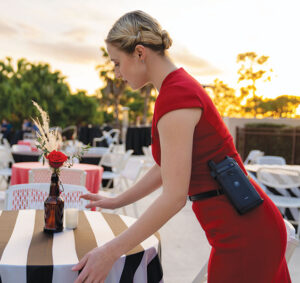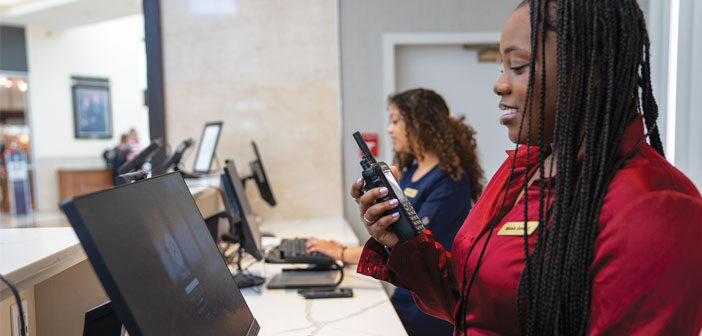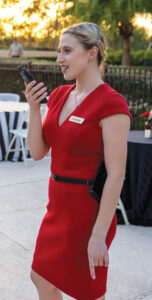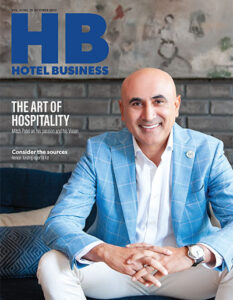For hoteliers, making sure that their guests have the best stay possible isn’t just about a clean room, great amenities and fantastic service—it is also about providing them with a safe stay.
Motorola Solutions Inc. has released its Safe Hospitality solution, a unified technology ecosystem that combines video security, access control, data and communications technologies to do just that.
The Safe Hospitality solution integrates these technologies via a cloud-based platform to support the specific operational, security and safety requirements of hotels.
“It is really taking a combination of video security and analytics, access control and then some form of communication, which is typically in the form of push-to-talk in most hotels, and putting them together in an integrated platform,” said Sharon Hong, VP, enterprise technology, Motorola Solutions. “They can interact with one another to provide ways for hotels and hospitality to operate more efficiently in terms of variance, productivity and, most importantly, security and safety.”
Using AI, video security analytics will monitor a property’s video camera system, and if unusual activity is detected, it can send alerts to radios. Data from cameras and sensors can trigger staff to address guest needs or safety threats, while voice communications can connect teams to support everyday operations and emergency response.
The ability to automate and streamline the flow of information to the right people across departments allows hospitality organizations to best direct their resources to support safety, productivity and delivery of an exceptional guest experience, according to Hong.
“The way the ecosystem comes together is that we have video cameras with analytics, we’ve got the radios, we’ve got the access control, and they all sit into an integrated platform,” she said. “Behind this platform is a tool called Orchestrate, what I like to endearingly compare to any kind of workflow application that you could use in any kind of consumer ecosystem. So, like Amazon has Alexa…”
Hong said that, like with Alexa, the user can set up specific rules for the system to activate. “If we don’t want a door to be open between 3 a.m. and 5 a.m., we can tell the system to send an alert on the radio to inform the front desk or the security guard that the door is opened,” she said. “It will alert them when it has happened rather than maybe having that incident go unnoticed.”

If a problem is detected, front-desk staff is notified to help deal with an issue as quickly as possible.
The AI in the video analytics can assess certain types of situations. “For example, crowding would be something that it can detect,” she said. “If it detects crowding or bunching of people in a certain location, like a stairwell, you can put in a rule to alert the front desk or security staff.”
The system also allows hotels, which are dealing with staff shortages, to go without someone to monitor all of the video feeds all at once. “When it comes to safety and security, perhaps pre-pandemic, a lot of hotels may have had more staff to keep an eye out for things, to make sure from a security standpoint people aren’t coming in from entrances where they shouldn’t be,” she said. “But after the pandemic, with the staff shortages that hotels are experiencing more than ever, particularly from a safety and security standpoint, we need to find ways to leverage technology to put eyes where people can’t be.”
For Hong, it is about being able to spend the staff’s time in the best way possible. “It is addressing real incidents versus hearing about a possible incident, getting there and realizing nothing happened, or even having something happen and having it take a while through word of mouth to reach the people who need to respond to it,” she said. “It really just shortens that time to alert the people who need to be aware of an incident.”
Essentially, the system helps the staff to be more proactive. “On the front end, it leverages the video and analytics to detect an incident and be able to respond to it before it really becomes something bigger,” she said.
The system also has a capability called Appearance Search, which allows it to find a person in previous recorded video that matches a specific description. “If you knew that this person who smashed a window or committed another incident was wearing a red shirt and blue pants, you can enter that into the management system,” said Hong. “The video will pull up frames with all people in red shirts and blue pants and other matching characteristics of the person. That, in itself, just reduces the amount of time for a search versus having someone sit through and watch all of the videos to find that person.”
Beyond security, the system also has the capability to count, including keeping track of cars in a parking lot. “If you have a large resort, or if you have an event, it can count how many cars are coming in and out of the lot,” she said. “Then, when you hit a certain threshold, it can automatically notify the staff on the communications devices that the capacity is starting to hit the limit.”
Hong said that she has received two different reactions from properties that have installed the Safe Hospitality solution. “Sometimes it is, ‘Boy, this is exactly what we needed,’” she said. “Or it’s, ‘Boy, I’d never really thought of it that way and now that you’ve got me, I can’t stop thinking of what else we could go do with this.’”



